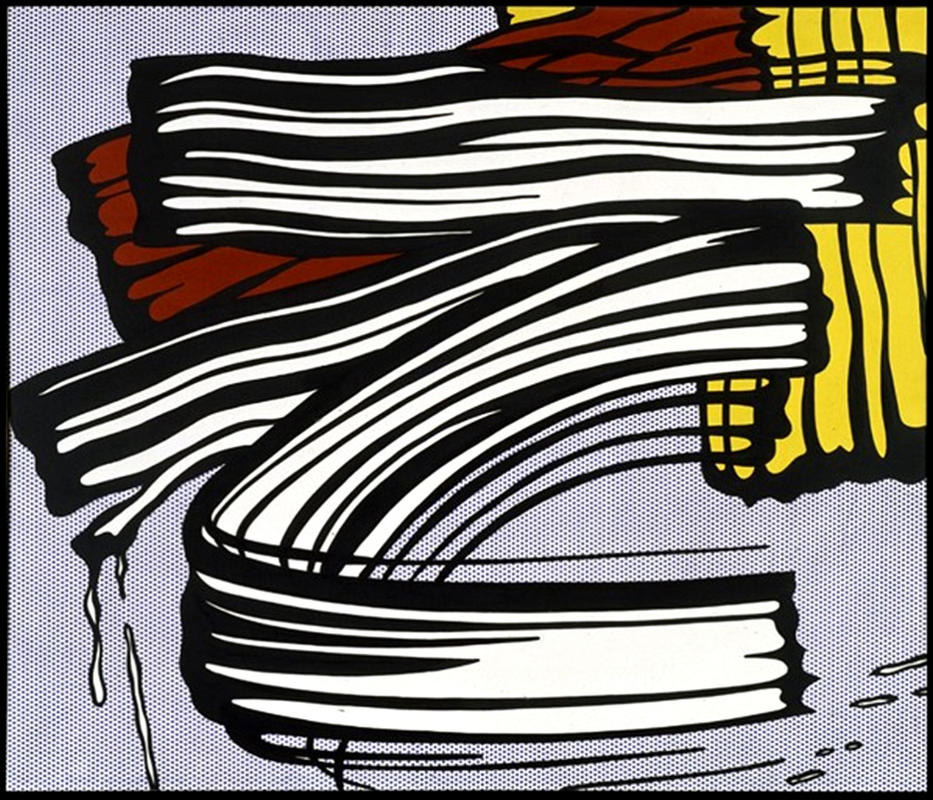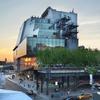More about Little Big Painting

Contributor
Lichtenstein's Little Big Painting is a chapter in his Brushstrokes series, a clever parody of the Abstract Expressionist dogma that once dominated the scene.
Just as influential as Pollock's drip paintings was "Totem Art," an essay by the painter Wolfgang Paalen, which drew on Pacific Coast indigenous artworks, such as those of the "Tlingit, Haida, Tsimshian, [and] Bella Coola," among others, to propose a kind of art practice that transcends the "dualistic" Western mindset in which the lone artist is psychically separate from, and dominant over, the environment and the medium. A couple of decades later, this ideology had morphed into a dominant mode of practice, in which all the cool kids were abstract expressionists, getting in touch with their deep unconscious drives by displaying their subjective, messy processes all over the canvas, especially through visible brushstrokes. Somewhere along the line, the abstract expressionists developed the idea that spontaneity, messiness, and obscurity were part of authenticity.
Lichtenstein, who, like Paalen, was of Jewish ancestry, engaged in textual debate with Paalen's dogma of spontaneity and immediacy. Lichtenstein's attitude in Little Big Painting is like Jim Carrey's character in "The Truman Show," as he does donuts in a roundabout, yelling maniacally to Laura Linney's character, "Somebody help me, I'm being spontaneous!!!"
The irony in the whole idea of using spontaneity and process-transparency as methods, as Lichtenstein and Warhol saw, was that the harder you try to be spontaneous, the more forced and contrived you actually look. Improvisation requires practice, and making the right errors is an art. Not everybody is going to resort to drugs and alcohol to simulate the naturalness of spontaneity, so Lichtenstein saw that he could make a parody of the whole idea of spontaneity by portraying a brushstroke that he found in a comic book, blown up to an enormous size, showing us the strange, hypnotic Ben-Day mass printing dots in the background and not a single actual brushstroke.
In his studio at 190 Bowery Street, in New York, Lichtenstein "borrowed" an image that he saw in Charlton Comics' Strange Suspense Stories 72, confident, like his peers, that he'd be able to lift this piece of "low" mass culture into the hermetic domain of "high" art without any copyright issues. The comic, drawn by Dick Giordano, shows an artist who has just finished a great work: two huge brushstrokes that cover his canvas. As Hal Foster writes, "Transforming an expressive act that was mythologized for its immediacy and primal origins into a cartoon-like, mechanically produced-looking image, Lichtenstein created a reflexive commentary on gestural painting."
Sources
- Crowther, Paul, and Isabel Wünsche. Meanings of Abstract Art: Between Nature and Theory. London: Routledge, 2012.
- Dorfman, John. "Wolfgang Paalen: The Painter of the Possible." Art & Antiques, Sep. 2019, http://www.artandantiquesmag.com/2019/09/wolfgang-paalen/.
- Dunne, Nathan. Tate Introductions: Lichtenstein. London: Tate, 2014.
- Eury, Michael. Dick Giordano: Changing Comics, One Day at a Time. Raleigh, NC: TwoMorrows Publishing, 2003.
- Francis, Mark. Pop. London: Phaidon, 2010.
- Niccol, Andrew. The Truman Show: An Original Screenplay. Chicago: Klett, 2000.
- Saggese, Jordana Moore. Reading Basquiat: Exploring Ambivalence in American Art. Berkeley: University of California Press, 2014.
Featured Content
Here is what Wikipedia says about Little Big Painting
Little Big Painting is a 1965 oil and Magna on canvas pop art painting by Roy Lichtenstein. It is part of the Brushstrokes series of artworks that include several paintings and sculptures. It is located at the Whitney Museum of American Art in New York City. As with all of his Brushstrokes works, it is in part a satirical response to the gestural painting of abstract expressionism.
Check out the full Wikipedia article about Little Big Painting













Comments (2)
Love a good Lichtenstein!